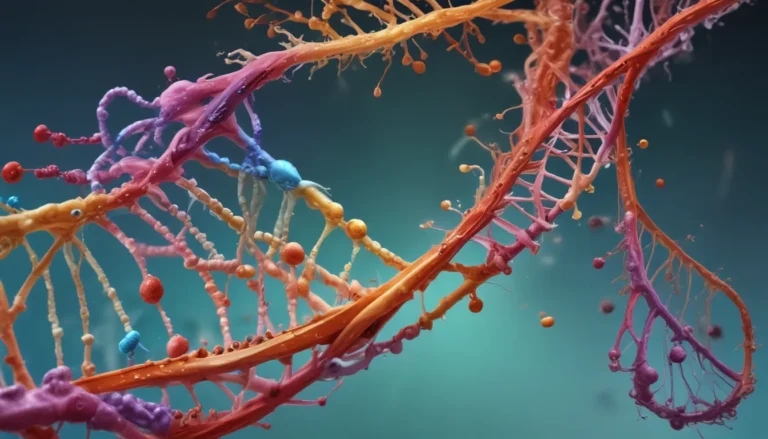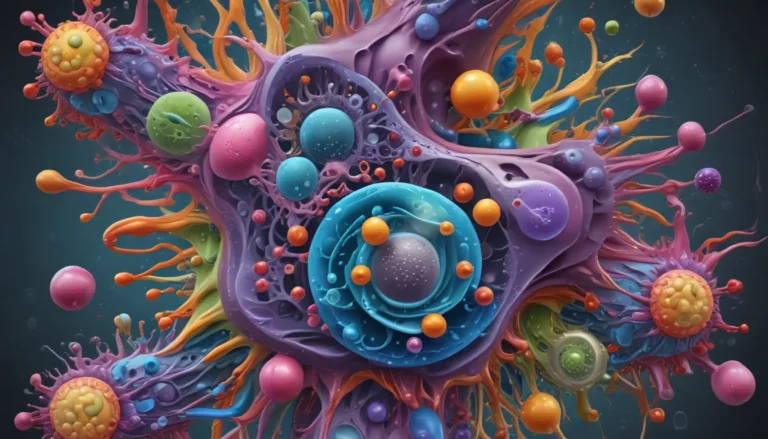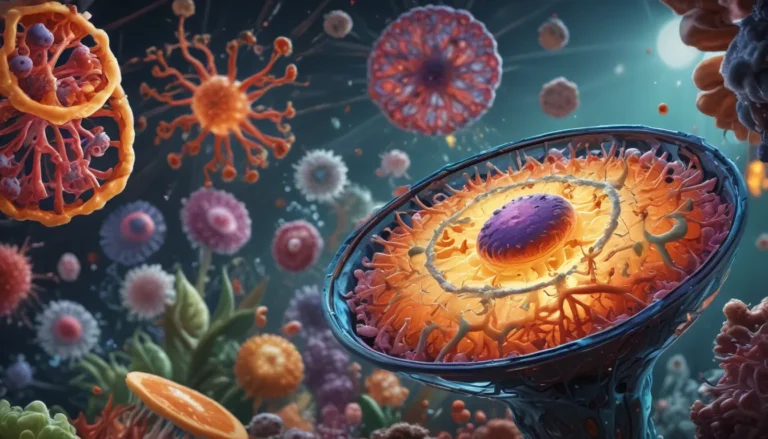A Note About Images: The images used in our articles are for illustration purposes only and may not exactly match the content. They are meant to engage readers, but the text should be relied upon for accurate information.
Are you ready to dive into the intricate world of enhancers and promoters, the genetic elements that dictate when and how genes are expressed? These small but mighty DNA sequences are the key players in gene regulation, orchestrating the complex dance of protein production in our bodies. In this article, we will explore 19 mind-blowing facts about enhancers and promoters, shedding light on their structure, function, and their indispensable role in the diversity of life on Earth.
Enhancers and Promoters: Genetic Traffic Controllers
- Enhancers and promoters are like genetic traffic controllers, dictating when and how genes are expressed.
- They play a crucial role in diseases and can be influenced by environmental factors.
- Scientists can manipulate them to study gene function and develop new treatments.
Decoding Gene Regulation with Enhancers and Promoters
Enhancers and promoters are DNA sequences that act as master regulators of gene expression. By initiating and enhancing the transcription process, they enable the conversion of genetic information into functional proteins.
The Distance Factor: Enhancers vs. Promoters
- Enhancers can be located far away from the genes they regulate, while promoters are typically nearby.
- Long-range interactions are made possible by the three-dimensional folding of DNA molecules.
Transcription Factors: The Key Players
Enhancers and promoters contain specific binding sites for transcription factors, proteins that regulate gene expression by binding to DNA sequences. This unique arrangement allows for precise modulation of gene expression.
Tissue-Specific Regulation
- Some enhancers and promoters are active only in specific tissues or cell types.
- This tissue-specific regulation ensures genes are activated when and where they are needed.
Collaborative Control: Enhancers and Promoters Working Together
Enhancers and promoters can interact with each other to fine-tune gene expression collectively. This collaboration allows for precise control of gene activation and integration of multiple signals.
Epigenetic Influence on Enhancers and Promoters
Epigenetic modifications, such as DNA methylation and histone modifications, can influence the activity of enhancers and promoters, enhancing or suppressing gene expression.
Environmental Factors at Play
External factors like temperature, stress, and chemical signals can impact enhancers and promoters, allowing organisms to respond and adapt to their environment.
Disease Connections
- Aberrant regulation of enhancers and promoters is linked to diseases like cancer and genetic disorders.
- Understanding these alterations provides insights into disease mechanisms and potential therapeutic targets.
Interactions with Genomic Elements
Enhancers and promoters can interact with other genomic elements like insulators and silencers to establish precise gene expression patterns, contributing to genome organization.
Non-Coding RNAs: Adding Complexity
Non-coding RNAs interact with enhancers and promoters to regulate gene expression, adding another layer of complexity to the gene regulatory network.
Developmental Dynamics
Enhancers and promoters are dynamically regulated during development, contributing to the timing of gene expression in embryonic development and tissue differentiation.
Chromatin Loops and Physical Interactions
Enhancers and promoters can physically interact by forming chromatin loops, facilitating communication between distant regulatory elements and target genes.
Part of Complex Gene Networks
Enhancers and promoters are integral parts of complex gene regulatory networks, working together with other regulatory elements to establish relationships between genes.
Inheritance and Engineering
- Enhancers and promoters can be inherited across generations, contributing to phenotypic diversity.
- Scientists can manipulate them to study gene function or develop novel therapeutic approaches.
Targets for Gene Editing Technologies
Enhancers and promoters are prime targets for gene editing technologies like CRISPR-Cas9, offering potential for treating genetic diseases and engineering desired traits.
Predictive Capabilities with Computational Methods
Computational methods can predict enhancers and promoters based on DNA sequence features and epigenetic modifications, aiding in understanding gene regulation and identifying therapeutic targets.
Applications in Synthetic Biology
Enhancers and promoters can be utilized in synthetic biology to design synthetic gene circuits for applications in medicine, agriculture, and biotechnology.
A Field of Ongoing Research
Enhancers and promoters continue to be a subject of active research, unraveling new insights into gene regulation and its impact on human health and disease.
Unveiling the World of Enhancers and Promoters
Enhancers and promoters are the unsung heroes of gene regulation, playing a crucial role in controlling gene expression at the molecular level. As researchers delve deeper into their mechanisms and functions, a world of possibilities opens up for understanding gene regulation complexities and advancing innovative approaches in medicine and biotechnology.
If you’re captivated by the mysteries of enhancers and promoters, join us in exploring the dynamic field of molecular biology where these genetic elements continue to intrigue and inspire researchers worldwide.
FAQs About Enhancers and Promoters
Q: What are enhancers and promoters?
A: Enhancers and promoters are regulatory elements within the DNA sequence that control gene expression.
Q: How do enhancers and promoters work together?
A: Enhancers interact with the promoter region through DNA looping and chromatin folding, working together to regulate gene expression.
Q: Can enhancers influence genes far away?
A: Yes, enhancers can influence genes located far away on the DNA sequence through long-range interactions.
Q: How are enhancers and promoters involved in human diseases?
A: Dysfunctional enhancers and promoters can lead to abnormal gene expression, contributing to various human diseases.
Q: What techniques are used to study enhancers and promoters?
A: Techniques like chromatin immunoprecipitation and genome editing technologies are employed to study enhancers and promoters.
Enhancers and promoters continue to captivate researchers, uncovering the mysteries of genetic regulation. Stay curious and explore the intriguing world of enhancers and promoters, where each discovery leads to a deeper understanding of the complexities of gene expression.






